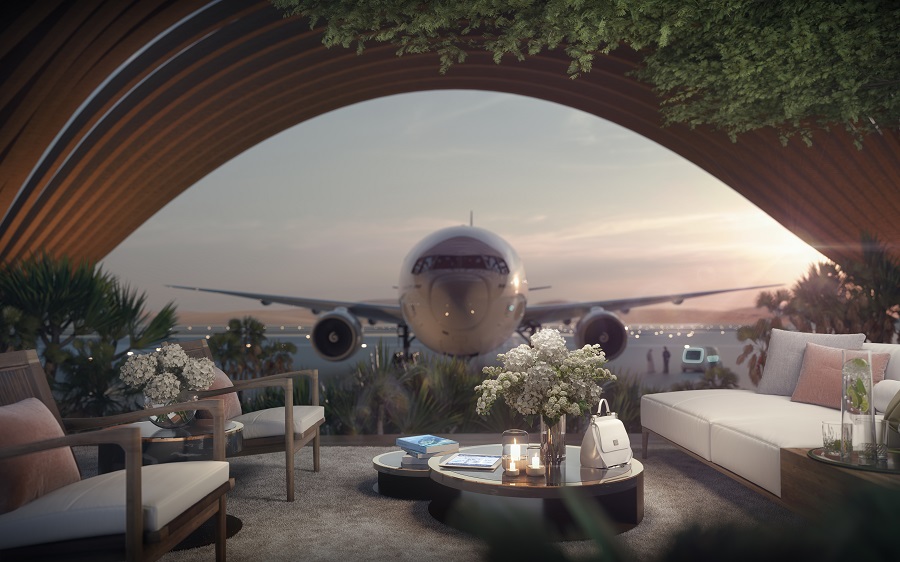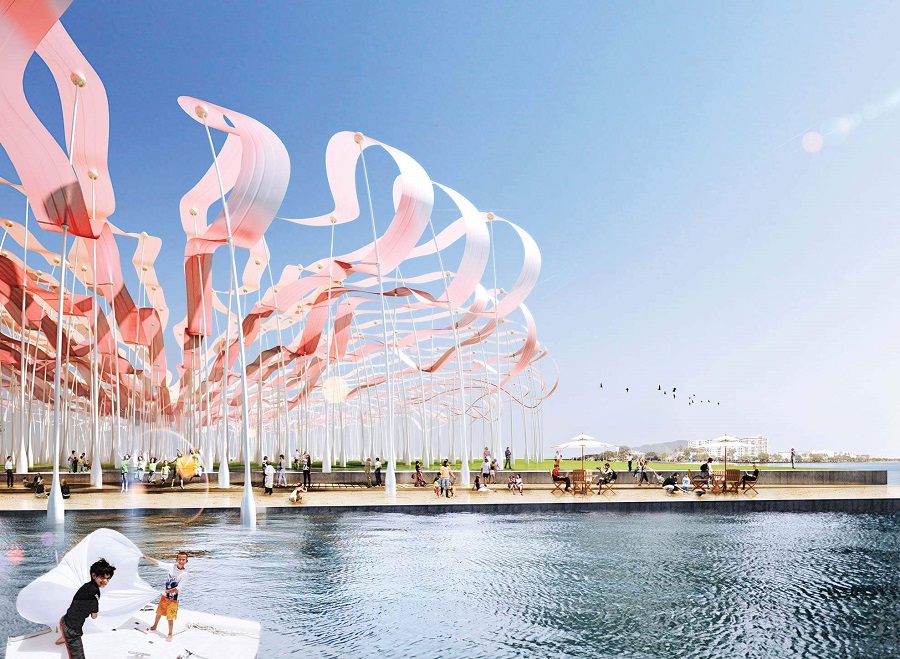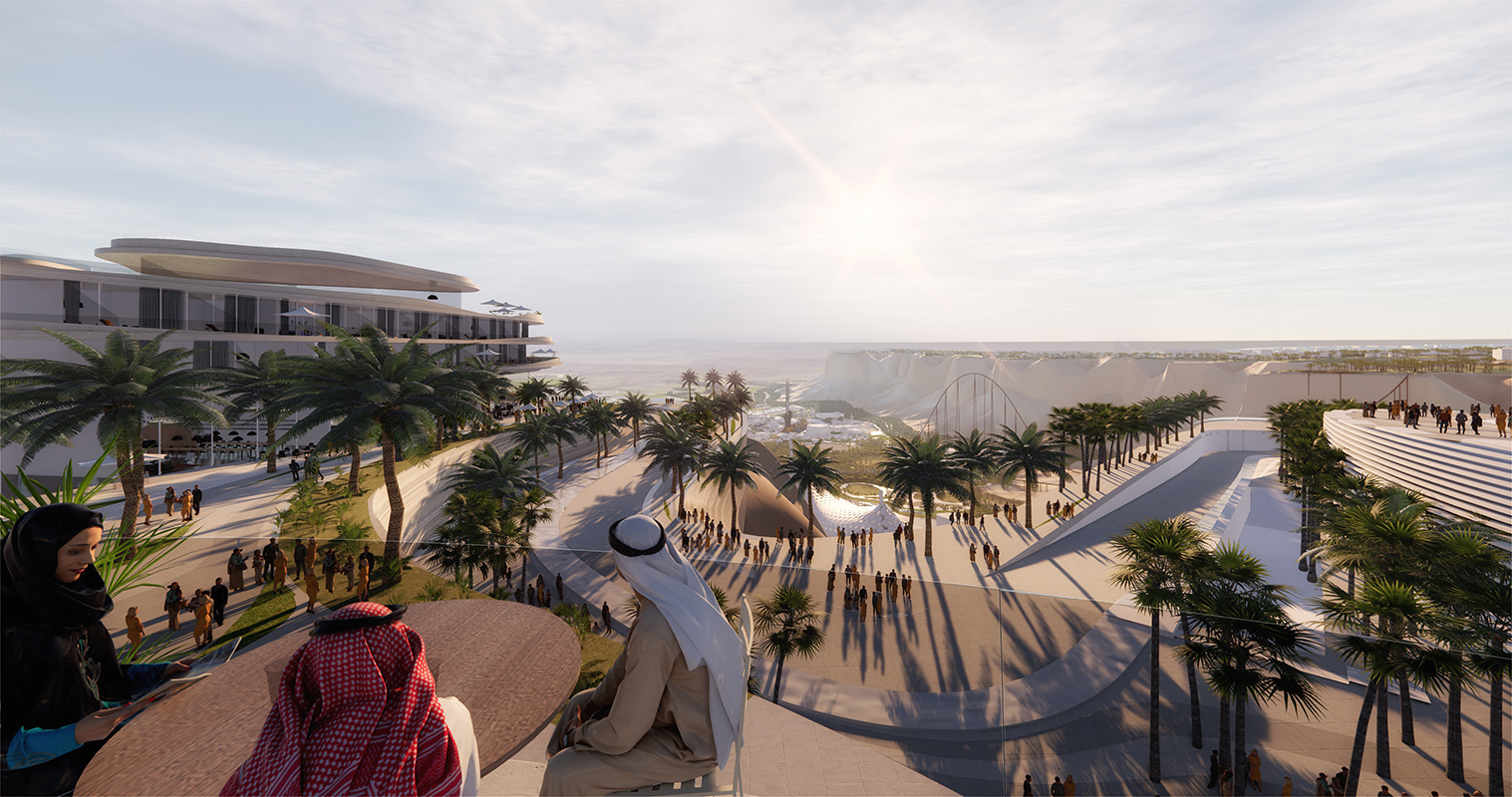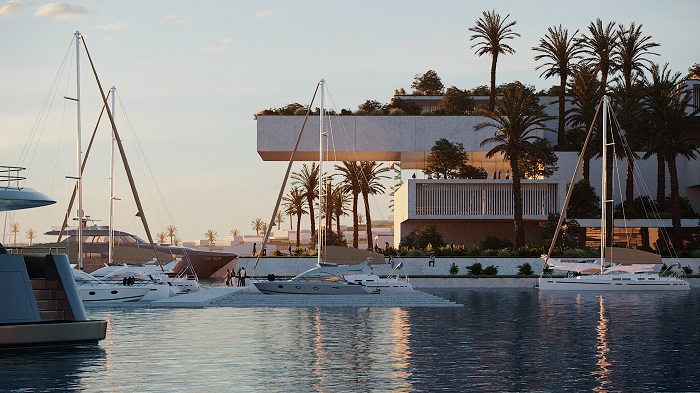A host of giga projects – large, government-funded initiatives designed to diversify the economy – are set to drive growth in the Saudi Arabia hospitality market in the coming years.
Key among them is the Red Sea Development, which is closest to fruition.
The project will be developed over 28,000 square kilometres of pristine land on Saudi Arabia’s west-coast and includes a vast archipelago of more than 90 islands.
The destination also features mountain canyons, dormant volcanoes and ancient cultural and heritage sites.
The destination will include hotels, residential properties, leisure, commercial and entertainment amenities, as well as supporting infrastructure that emphasizes renewable energy and water conservation and re-use.
Activity for the first phase of development, which focuses on enabling the infrastructure to support future work, is well underway.
A marine infrastructure contract awarded in July last year includes the construction of a 3.3-kilometre crossing to Shurayrah (the main hub) and development has begun at the Coastal Village, which will be home to around 14,000 people who will work at the destination.
Most recently, the Red Sea Development Company awarded the design contract for the destination’s international airport, set to serve the one million annual tourists by 2030.
After competitive tendering, the contract was awarded to Fosters + Partners.
“Awarding the contract for the design of our airport is an important milestone and the first of the underlying infrastructure projects of the destination” said John Pagano, chief executive at the Red Sea Development Company.
“Fosters + Partners and their engineering subconsultant, WSP Global, have demonstrated their ability to deliver projects in line with world-class development and our sustainability standards.
“We look forward to collaborating with them to develop an innovative design that will enhance the visitor experience, meet our sustainability goals and enable us to deliver an airport for the future.”
The airport, due for completion in 2022, will serve an estimated one million tourists per year with a schedule of domestic and international flights, and a peak of 900 passengers per hour.

In line with the company’s sustainability goals, the airport will have an eco-friendly and sustainable design.
Its architecture will be informed by the natural beauty of the surrounding landscape and represent the vision of the Red Sea project.
Gerard Evenden, head of studio, Foster + Partners said: “The Red Sea Airport has been envisaged as a gateway to one of the most unique resorts in the world and an integral part of the visitor experience.
“Inspired by the colours and textures of the desert landscape, the design seeks to create a calm and luxurious journey through the terminal and will become a transit hub for visitors coming in by both land and air.
“We look forward to working with the Red Sea Development Company to fulfil the vision for this ambitious one-of-a-kind project.”
The Red Sea Project is the world’s most ambitious tourism and hospitality project: a new luxury destination being created in one of the world’s last natural hidden treasures on the Red Sea, that will position Saudi Arabia on the global tourism map.
The development is planned to welcome its first guests by the end of 2022.
In addition to the dedicated airport, the first phase of the development will include up to fourteen hotels offering 3,000 hotel rooms across five islands and two inland sites, as well as commercial, retail and leisure facilities and other infrastructure.
Upon completion in 2030, the destination will deliver up to 8,000 hotel rooms across 22 islands and six inland sites.
The annual number of visitors will be carefully managed to avoid over-tourism and ensure that every guest enjoys a uniquely memorable experience.

Alongside the Red Sea Development, Amaala is the giga project which has been garnering the most attention.
An uber-luxury destination on the north-western coast, the location aims to create an all-new concept for ultra-luxury tourism focusing on wellness, healthy living and meditation.
The new destination is a natural extension of the Mediterranean Sea.
The initial funding for the project will be provided by the Public Investment Fund of Saudi Arabia, which will spearhead the development of Amaala into a bespoke hospitality experience located within the Prince Mohammed bin Salman Natural Reserve.
As the project progresses, attractive partnership and investment packages will be available for the private sector.
The PIF has announced that Amaala will sit alongside Neom and the Red Sea Project as part of the giga-projects investment portfolio, helping to establish a unique tourism ecosystem, supporting economic diversification and creating high-value job opportunities.
In addition, PIF earlier announced the appointment of veteran luxury hospitality and development executive Nicholas Naples as chief executive of Amaala, who will lead development and operations for the destination.
Naples stated: “Amaala will awaken the world’s imagination by rephrasing the current concept of the luxury tourism experience, especially in terms integrative wellness, specialty treatments and related recreational offerings.
“Our concept will provide a rich service offering that exceeds customers’ expectations by providing a comprehensive suite of services not commonly found in one location that is unique by all measures.
“The Amaala experience will be enhanced by its setting, spread across beautiful, untouched natural sites.”
He added: “Amaala represents a unique and transformational luxury experience where full-fledged wellness tourism is integrated alongside a curated mix of arts, culture, and sports offerings that are individually tailored for the ultra-luxury lifestyle, including the availability of a fashion scene, healthy-living services, and year-round sea expeditions.”
Amaala will feature extraordinary architecture and unprecedented luxury in both hotels and private villas as well as a quaint retail village and an academy of the arts that fosters the growth and development of young artists from Saudi Arabia and the region.
Cultural events, artistic performances and related conferences will bring international visitation to the region where visitors can partake in a wide array of unique and personalised holiday experiences set against stunning scenery, mountainous landscapes and diving in pristine coral reefs.

Located on the doorstep of Riyadh, Qiddiya is the latest giga project to get off the ground and is designed to become the capital of entertainment, sports and the arts in Saudi Arabia.
As a giga projects, it will directly employ approximately 17,000 people by 2023.
As a core tenet of Vision 2030, Qiddiya has a dual economic and social purpose: to advance economic diversification and unlock new professional pathways while enriching lives of youth in the kingdom.
Crown prince Mohammad bin Salman in 2017, with a ground-Breaking ceremony taking place a year later.
Qiddiya Investment Company, the company behind the project, was incorporated as a closed joint-stock company wholly owned by the Public Investment Fund of Saudi Arabia in 2018.
Visitors will enjoy activities across five cornerstones: sports and wellness; nature and environment; parks and attractions; motion and mobility; and arts and culture.
Development of these areas will give rise to family-friendly theme parks; sports arenas suitable for international competitions; academies for sports and the arts; concert and entertainment venues; racetracks for motorsport enthusiasts; outdoor and adventure activities alongside nature and environment experiences; and historical, cultural and educational activities.
Qiddiya will also include a variety of real estate options and community services.
Qiddiya is located south-west of Riyadh on a site that spans 334 square kilometres.
Phase one is set to open in 2023.
Last summer Qiddiya Investment Company unveiled the much-anticipated master plan for the project.
The announcement came after an extensive design process resulting in a meticulously considered arrangement that complements the epic natural landscape and creates a series of pedestrian-oriented episodes that encourage discovery, trial and enjoyment of the broad spectrum of activities included in the plan.
“The people of Saudi Arabia share the universal desire for enriching experiences, and our plan allows Qiddiya to unlock access to these experiences in a new and culturally relevant way, encouraging personal and professional pursuits that foster enrichment,” said Reininger.
The plan for the project, created in conjunction with Bjarke Ingles Group, a Denmark-based company, was constructed with careful consideration to the natural patterns that have been etched on the site throughout history, giving rise to a green-belt network carrying visitors throughout the property on roads, bike paths and walkways built within an enhanced landscape environment.
“This project sets a new global standard for the seamless integration of visitor-focused experiences and an innovative mix of program pieces, delivering an unparalleled entertainment destination,” said Bob Ward, chairman of the Qiddiya Advisory Board.

The projects come at an exciting time for tourism in Saudi Arabia.
There has recently been a surge in tourism visa applications from overseas visitors following a decision to loosen criteria last year.
The conservative Middle Eastern kingdom unveiled plans for a new visa regime for 49 countries, while also relaxing strict dresscodes for female visitors.
Saudi tourism minister, Ahmad al-Khateeb, described it as a “historic moment” for the country.
Visas have until now largely been restricted to pilgrims, business travellers and expatriate workers.
Officials in Saudi Arabia said the country wants tourism to rise from three to ten per cent of gross domestic product by 2030.
“Visitors will be surprised by the treasures we have to share – five UNESCO World Heritage Sites, a vibrant local culture and breathtakingly natural beauty,” al-Khateeb added.
Attractions include Madain Saleh in Al-Ula, the largest conserved site of the Nabataean civilisation, the At-Turaif District in Ad-Diriyah, the first capital of the Saudi state, and historic Jeddah.
Also on offer is the rock art in the Hail Region, which depicts 10,000-year old inscriptions of human and animal figures, and the Al-Ahsa Oasis, the largest oasis in the world.
Tourism has also been boosted by a decision to allow unmarried couples to share hotel rooms in Saudi.
Under the new rules, women will also be allowed to stay in hotel rooms alone.
Couples previously had to prove they were married before getting a hotel room – but now these rules have been relaxed for foreigners
“All Saudi nationals are asked to show family ID or proof of relationship on checking into hotels,” the Saudi Commission for Tourism & National Heritage said in a statement.
“This is not required of foreign tourists.
“All women, including Saudis, can book and stay in hotels alone, providing ID on check-in.”
The new visa regulations state that female tourists are not required to fully cover up but are still expected to dress modestly.
More Information
Find out more about tourism in Saudi on Discover Saudi Arabia or watch some cutting-edge videos on Red Sea Travel TV.